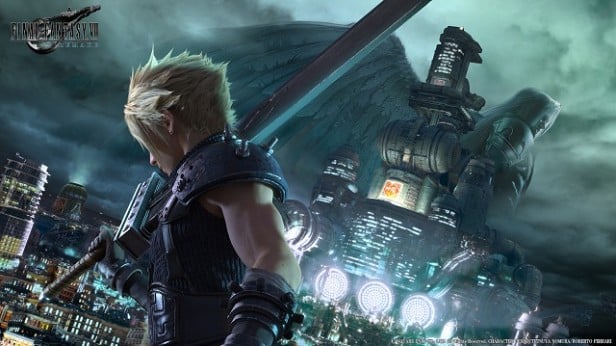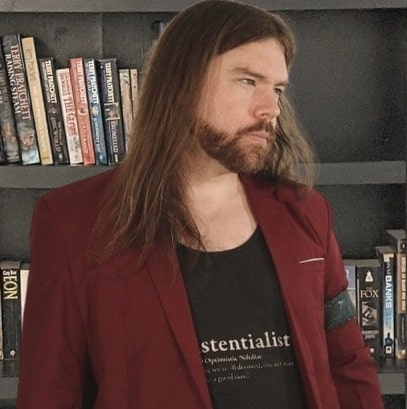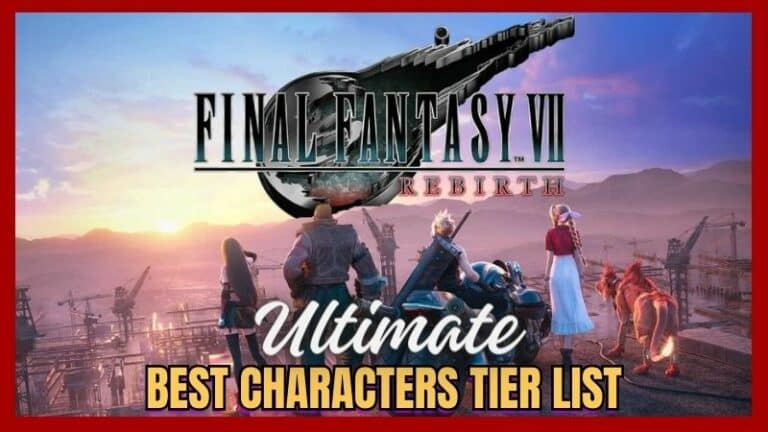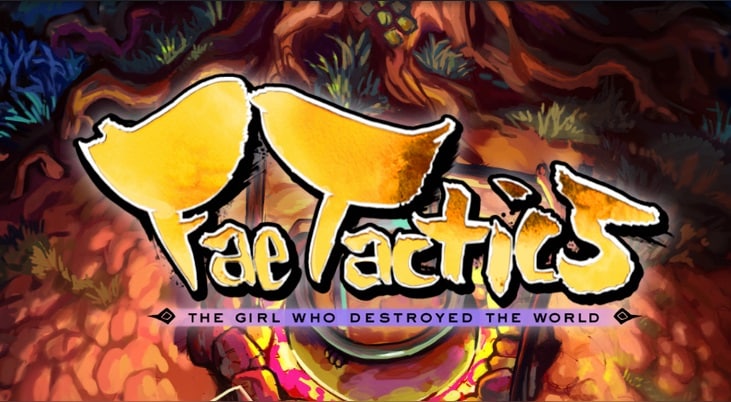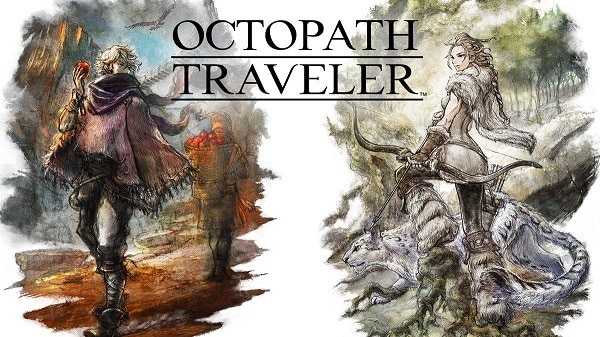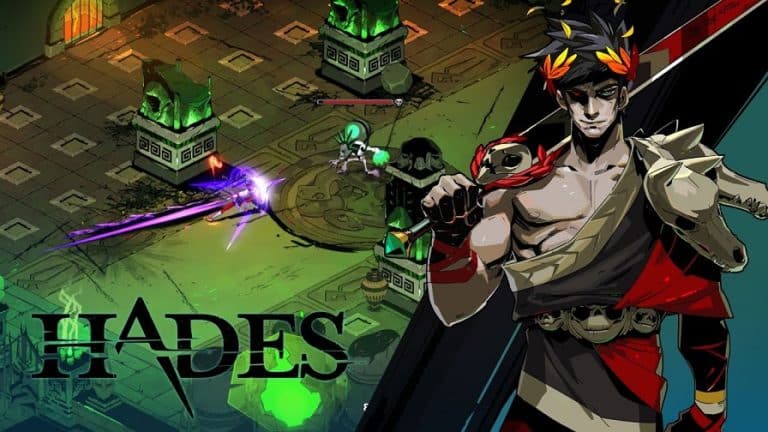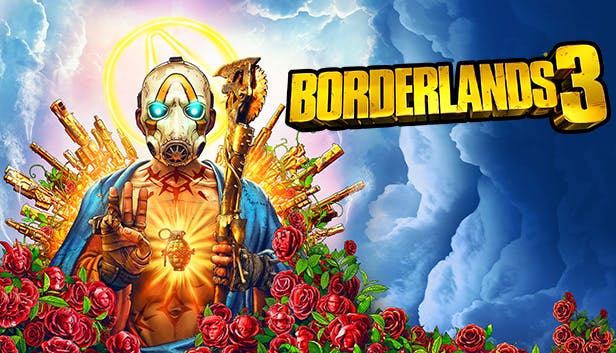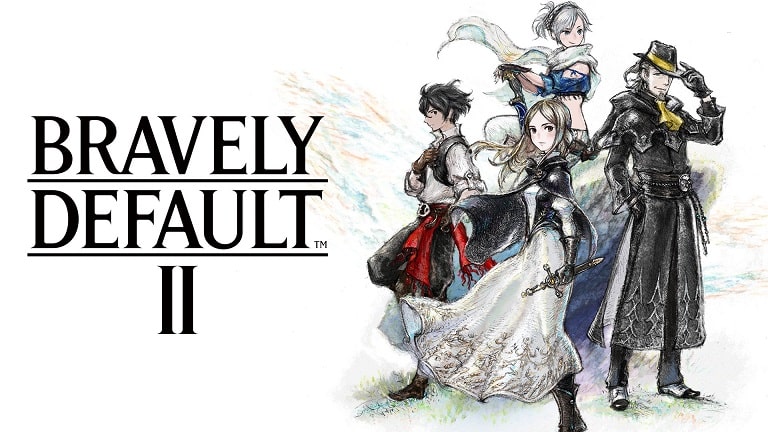Final Fantasy 7 Remake is Amazing (Not a Corporate Shill Review)
This is my review of Final Fantasy 7 Remake. Whew, Final Fantasy 7 Remake is here. I got it on release day and I’ve been playing it ever since. Yesterday, I finally beat it. And when I say I beat it, I mean I really beat it. Beat the super boss, collected most of the skill books scattered throughout the hard mode chapters, mastered all the worthwhile materia. If you’re a fan of the site, you probably know by now from my previous reviews, like my Persona 5 Royal review, that I don’t like to review a game I haven’t fully experienced. You probably also know that jRPGs are my wheelhouse, and Final Fantasy 7 is probably my favorite game of all time, all things considered. This review does have spoilers (all my reviews do), so be aware.
I have a lot to say about this game. Let me start off by saying I think what they’ve accomplished here is amazing, but it’s not without flaws. So while I’m going to praise this game, I have substantial criticisms and I’m offering them with appreciation and the hope that they’ll take them into account as they continue the series in the next episode. To make it all easier, I’ll split this review into sections
Xenosaga Similarities
This game gives me major Xenosaga vibes, which is great. Personally, I really enjoyed the Xenosaga series. Unfortunately, other people didn’t like it quite as much. But what do I mean by Xenosaga vibes? The parallels are numerous. First, the episodic nature of the game. The game, just in terms of feel and pacing, reminds me a lot of Xenosaga 1. The way the story sequences are filmed in terms of cinematography and tone is very reminiscent of Xenosaga. Even the sci-fi/fantasy setting, full of robots, is visually similar to Xenosaga. The art style, while definitely more polished and higher fidelity, also reminds me of Xenosaga.
In fact, without knowing what I’m talking about, I would almost assume this game had developers who previously worked on the Xenosaga series and/or that they took a huge amount of influence from that series. The best accessory in the game is inexplicably called Gotterdammerung, which is the most Xenosaga thing ever (Xenosaga’s subtitles are all German Nietzsche book titles and the games are full of references to Wagner operas). I would also say, if you liked Final Fantasy 7 Remake, you should totally check out Xenosaga.
Graphics & Animation – Final Fantasy 7 Remake Review
I think it’s undeniable that the graphics in this game are amazing. They really set a new standard for what a video game should look like. They’re not perfect. There are many moments in the game where the game doesn’t load textures or characters in time, and you’ll see dirty placeholder textures get replaced or NPCs pop into existence from nowhere. However, that’s not necessarily a problem with the graphics, it’s more a problem with my old PS4 and the game’s graphical optimization. NPCs also have some awkward facial movements that remind me of Mass Effect, and the less important an NPC is to the plot, the less overall detail their model and animations seem to receive.
This game really needs a picture mode, because there are so many times throughout the game where you’re just casually running around and you’ll have to just admire the breathtaking scenery. The garden outside Aerith’s house is truly something else. And the entire Shinra Headquarters, I have to admit, is probably the pinnacle of achievement to date in environmental detail, not only because of how mindblowingly attractive it is, but also because of the environmental narrative design that you experience as you go through the Shinra museum. Wall Market is another standout.
The character models for all the main party members are absurdly cool. Every aspect of them is perfect. I can’t imagine what criticisms anyone might have for how the character models look. Not just the main party, but also important NPCs like Rufus, President Shinra, Heidegger, Reeve, Scarlet, Hojo, even Marlene, all have this air of near-perfection about them. And that attention to detail extends to their mannerisms and expressions. Hojo, perhaps, delivers one of the best facial acting performances to ever exist in a video game.
However, there is a downside to the animation, which is it often clashes with gameplay and story in a somewhat negative way. This is clearly a development process where if the animators wanted to do something cool, and it caused conflict with the design or story teams, the animators got their way.
We’re talking unreasonably long animations during battles, which is especially irritating when this game is full of hitstun and interrupts (we’ll get to that), and cool-looking, flashy scenes that don’t make any sense in the context of the story and give off a bad anime/DBZ vibe. Thankfully the latter is few and far between, but when it happens, it’s bad. Roche is the worst offender, but also a few instances of Advent Children style superhuman acrobatics from Cloud come to mind.
That said, graphics are one of the strongest points of this game. This game is gorgeous, from beginning to end. Like I mentioned, Aerith’s Garden, Wall Market and Shinra Headquarters are particular standouts.
Gameplay – Battle System
That battle system here is actually very compelling. But it has significant issues that I think should be addressed in the next installment. The system itself, which combines action-oriented gameplay with RPG style tactical decision making, is very good. The closest thing to compare it to is, somewhat unexpectedly, Dragon Age Inquisition. I liked it a lot. However, let’s talk about those significant problems I brought up.
I hope you like hitstun, extraordinarily long stuns and constant spell interrupts, because Final Fantasy 7 Remake’s battle system is chock full of hitstun. This is one of the areas where all the superfluous animation becomes extremely annoying. Because while your dude is flipping around doing all this impressive looking acrobatics, a robot will come whack you and you go flying into the air, fall to the ground, and have to get up. It takes forever, and it happens constantly. Also because of the extended animations for attacks, it’s difficult to time rolling and dodging since you not only have to have the reflex, but you have to wait for these long animations to fully end before you can transition character states.

Barret ended up being my favorite party member gameplay-wise for two reasons. First, his attack animation is straightforward. It doesn’t miss and it’s easy to cancel and roll out of. Second, he has an attack called Maximum Fury which, as far as I know, is the only skill in the game which ignores hitstun. Tifa also felt nice to control because her attack pattern was relatively fast and you could quickly stop your attack chain and roll away if the need arose. Hitstun in this game was the bane of my existence. Not only because of the animations, but for another important reason…
For whatever reason, if you get interrupted while channeling a spell, performing and ability or even using a limit break, that shit is gone. The ATB bar is gone. The MP is gone. The limit bar gets used up. It’s not a good feeling or a tactical feeling. It’s incredibly annoying. It feels like when a vending machine eats your money. If they change one this about this game, it would be this. This shit was so infuriating, and it happens constantly.
Let’s also talk briefly about the third thing I mentioned, which is extraordinarily long stuns. I don’t know if you’ve ever played 3rd person RPGs before, but usually when you get stunned it’s like 2-3 seconds. Or, if it’s a longer crowd control, like sleep, it could be 8-10 seconds. This game has enemies that will just casually stun you for like 20 seconds. Sleep lasts forever and getting attacked doesn’t dispel it. Enemies will leap onto your character and ‘bind’ them. There were battles in this game where I felt like I might as well just put my controller down because I couldn’t input commands for 20-30 seconds at a time between getting knocked down, getting stunned, getting bound, etc. It’s not good, especially because you can’t even button mash to shorten the time.
The hitstun itself isn’t a problem, but you can’t employ the twitch reflexes necessary to dodge all these attacks when a standard attack initiates a series of flips that can’t be canceled out of. So these two features of the battle system clash with each other in a way that causes a lot of irritation. Also keep in mind that your attacks generally don’t cause hitstun unless they pressure or stagger the enemy, so it’s not a two-way street.
Another set of elements from the battle system that clash with each other are the way building your ability bar and general enemy AI play together. Characters you’re not actively controlling build their ability bar up extremely slowly. However, enemies target the character you currently control. So if you want to use Aerith as a support healer, for instance, that requires that you take control of Aerith from time to time to build her bar up, which causes all the enemies to beeline towards her, passing your frontline, and just gib the shit out of her. So what I found myself doing throughout most of the game was just casting haste on Aerith, switching to her for a split second to fire off like 2 normal attacks, and then switching back to Cloud, Barret or Tifa. It’s impossible to have, for example, a tank, because neither the enemy AI nor the way the system works supports that.
AI for your characters, in general, is very bad. They contribute like 45% of their full potential max when they’re not being directly controlled. It feels intentional, like it’s an incentive to get you to switch between characters. Which is a fine design decision, I guess, but in practice it just makes your party members feel like reserve characters instead of active participants.
I have some pretty common sense suggestions to fix some of these problems in future installments.
First, put hitstun resistance, like Maximum Fury gets, on more moves. Second, make spells, abilities and limit breaks consume the resources when they hit, not when they’re cast. Third, lower the amount of time that stuns and crowd control spells last and let button mashing contribute to shortening their effect length.
On the AI-front, I think they should add three things to help improve AI. 1) Add a blue “Auto” materia that makes any green or yellow materia act like Auto-Cure (except have it cast its highest level spell, not its weakest one). 2) Give a menu where you can add any learned character abilities to be cast automatically. 3) Make the AI more aggressive in general, so it builds the ability bar faster.
Aside from those issues, which I have to say, I found to be glaring issues, I actually really enjoyed the combat system. The problems with it, I felt, were luckily not fundamental to the system itself, but tuning issues.
Oh yeah, also a lot of bosses and enemies are bullet sponges. It wasn’t that bad. But, whew, some pretty spongey enemies in this game.
Gameplay – Upgrade Systems
The materia system certainly holds up. It’s just as engaging now as it ever was. There are, however, very few meaningful materia combinations that you can put together. That’s relatively forgivable given that this is the first installment. You get one copy of Magnify materia, which you’ll inevitably pair with Healing materia on your main healer. You get two copies of elemental materia, which you’ll slot onto your physical attackers.
HP Absorb pairs well with Deadly Dodge, which you should certainly put on Tifa because her Deadly Dodge attack chain is better than her standard attack chain, so you’ll be using it constantly and basically have permanent lifesteal. MP Absorb, which should be great for an attack mage, makes almost no difference. It restores 0.1% damage as MP, so if you cast Firaga on Aerith with 2 Magic Attack Ups, you get back like 4 MP. For an ‘ultimate’ Materia that you only get one copy of, that’s pretty underwhelming.
All the standard materia is great, but then you also get a pile of unique, almost completely useless command (yellow) materia that you both don’t have room to slot into your gear, nor would you want to slot it even if you had plenty of room. So I do wish a few more clever materia combinations existed, but once again, I think it’s totally fine given that this is the first installment. There’s room to grow, and that’s appropriate.
The other upgrade system, where the remainder of character customization comes in, is the weapon upgrade system. I liked it. I found it to be decently engaging. Each weapon fulfills a sort of specific, easily discernible role. Most characters have a balanced weapon, a physical attack-oriented weapon, a magic-oriented weapon, and a handful of more unique weapons. I don’t have too many complaints about this, but I don’t have too many compliments either. It’s fine.
The upgrades are mostly not very exciting. Almost everything worthwhile is +attack, +magic attack and +hp, with a few more unique upgrades like MP Regeneration, +crit/crit damage and +elemental materia damage. But, no lifesteal, no chance on hit to proc some kind of spell, no status effects. Nothing to make each individual weapon really stand apart from one another. At the end of the game, they mostly just have different stat allocations.
I did like the abilities that each weapon granted, and I liked the system that you use to learn them, which is done by performing a few simplistic feats. It was a much nicer system than, say, learning weapon abilities in FF9 through AP grinding.
Altogether, I’d say the Materia system is great and I’m excited to see what new Materia makes it into the next installment, and I’d say the weapon system was fun but I wish it had a little more pizzazz.
Story – Final Fantasy 7 Remake Review
This is the section you’ve all been waiting for. BUT RYAN WHAT ABOUT THAT WACKY ENDING EVERYONE’S TALKING ABOUT? I have a fair amount to say about the story, but actually let me do the music real quick first and come back to this.
Music – Final Fantasy 7 Remake Review
The music in this game is generally incredible. It’s both objectively very good and full of nostalgia. The music for Final Fantasy 7 really draws comparison with the original Star Wars and the original Jurassic Park. There are just so many absolutely iconic songs in this game that punch up the emotional weight of the scenes very well. Obviously Sephiroth’s theme is amazing, but also the general theme, the battle theme, the ominous, mysterious music in the later parts of Shinra HQ. It all adds an enormous amount of character to this game’s overall tone.
There is a sort of semi-sidequest throughout the game of collecting the game’s tracks, which you can play in a jukebox. Some of these tracks are subdued, sort of milquetoast remixes of existing music, but some of them serve as great Easter Eggs and/or fan service. When I encountered the Cosmo Canyon track, for instance, I thought that was a really nice inclusion. Like, Cosmo Canyon may not be in this game, but it’s in this universe, they didn’t forget it.
There’s a reason symphony orchestras play the Final Fantasy 7 music worldwide, and this is because it’s just fucking ridiculously good. It’s well recreated here, and it’s well utilized in the story, as well as a nice exploration mcguffin.
Story, for real this time – Final Fantasy 7 Remake Review
A lot of people are talking about the ending, and I’m sure you want to hear my thoughts on that as well (or maybe not, it’s kind of a bloodbath out there), but I want to talk about the story as a whole, so I’ll get to the ending eventually.
99% of the game is not only faithfully recreated, but also done justice and executed above and beyond what the original was capable of. As a whole, this game provides one of the best, if not unquestionably the best, most captivating narratives in triple-A video games over the last several years. Not only because of the voice acting, the plot and the character animations, but also through the sheer amount of style and tone-setting that the game builds up. Wall Market is one of the most amazing story sections in a video game ever, the Shinra HQ is unquestionably compelling, and the combination of cinematic scenes and in-game banter really helps flesh out the experience.
That’s not to say the story execution isn’t without faults. It’s very clear that, like the original FF7, this game is a product of its time. This game takes a lot of storytelling cues from Red Dead Redemption and Assassin’s Creed, with the follow-along missions that exist purely to have your companions deliver dialog. As a result, there’s a lot of slow walking sections that feel diegetic and engaging for a while, but they eventually start to feel slightly overused and have a tendency to clash with the pacing of the game, especially on subsequent playthroughs on hard mode.
The game’s attempts to expand on the original source material are hit or miss. Some are tolerable, but not memorable and feel sort of like a waste of everybody’s time (Marle), some are very, very welcome, highly compelling and absolutely add to the narrative (Jessie, Wedge, Johnny and Biggs — in that order), some are just downright bad and totally out of sync with the tone of the game (Roche).
Everyone’s talking about the side quests. I found those to be another indicator of the influence from the Red Dead Redemption series. The people at Square Enix are probably so confused right now, given that Red Dead didn’t get criticized for its banal side quests, but FF7 Remake is. The problem is one part structure and one part execution. This structure of side quests could be fine, but the side quests themselves are largely unimaginative and don’t add to the narrative.
Wall Market is kind of the only exception. Its side quests include a few fun mini-games and some scenes that relate to a relatively fun comedic side character (Johnny), and they have a sense of purpose rather than a sense of busywork. They should take inventory of why Wall Market worked better than the other areas. The structure itself is beginning to feel a bit dated and this is, I think, part of the problem with corporate game design. It copies instead of innovating, and as a result often chases trends that have already passed. Red Dead was praised for its open-world structure… in 2010. The jig is up on fetch quests like this in 2020. People are a lot more concerned with a game wasting their time.
The reason I bring this up in this story section rather than the gameplay section is because I really genuinely felt like the game intended to use these side quest hub areas to add to the lived-in feel of the city, as well as to create opportunities for banter between the characters and expand upon their relationships. It worked only well enough to make me believe that was their intention.
The first hub area intends to expand on your relationship with Tifa and teach you about what life in Midgar is like, which semi-works, but it could have been executed a lot better and have been more creative, especially if it had avoided standard tropes. The second hub area, in Sector 5, similarly is meant to expand upon Sector 5 and help you get to know Aerith a lot more. This area is marginally more successful. Wall Market is the most successful, but still somewhat lacking, and the last hub area is fine because it’s more like a calm-before-the-storm power-up collection training section than anything else.
Altogether, the story is captivating and brilliantly executed, interrupted only by these hubs which could have been executed better, and some unwelcome, overly cartoonish characters (Roche). The character building for each of your party members and the Avalanche crew is fantastic. I found that I really cared about each character. And, for you Final Fantasy 7 fans, once Red XIII joins you, it really starts to feel like Final Fantasy 7. Like, the way that Final Fantasy 7 feels after Midgar, which is a lot more fantasy mixed with industrial technopunk and a bit less industrial technopunk mixed with fantasy.
Now, let’s talk about that ending. To be honest with you, I’m not sure what to make of it. 99% of the game is totally faithful to FF7, even with the changes. Like, yes, Sephiroth stabs Barret and he gets revived, which is a little wacky, but literally until you’ve defeated Motorball, it’s super faithful. It gets a bit ‘remixed’, especially toward the end, but as a Final Fantasy 7 fan, nothing seems like it wasn’t going well. Then, you beat Motorball and you get a series of just WTF scenes. So it’s not like this thing goes off the rails toward the end. It goes off the rails in literally the last minute or two of the game.
And as far as whether the ending dramatically changes the plot of Final Fantasy 7, I really couldn’t say, because it raises a series of questions and whether this ending is a big turd in the cereal bowl that poisons the whole franchise, or a bit of remixed storytelling that could work out quite well, I feel, completely depends on what the answers to those questions are.
The vibe I got, was that the duel with Sephiroth exists to give a larger than life final boss to this episode, as well as to provide rationale, mystery, and malice to the series villain. I felt that the meeting with Sephiroth played out in the context of the rest of the game teasing Sephiroth’s ability to manipulate Cloud (the clones from the original are much more prevalent in the narrative here).
I felt that the flash forwards the party experiences existed in the context of that overall narrative. I felt the final duel with Sephiroth, which Cloud loses, exists to create a bookend for the series (i.e. Cloud loses the duel in episode 1, but in episode whatever at the end, it calls back to this moment and Cloud, having grown from his journey, is able to defeat Sephiroth).
As far as the arbiters of fate, I thought that was definitely wacky and I’m not sure it added much to the plot. I think it would have been a lot better if, by changing very little, they made this final boss a new WEAPON and used these arbiters of fate to introduce the concept of the WEAPONs and indicate to the player, whether the party realizes it or not, that Sephiroth is an enemy of the planet.
Based on how the game treated its source material throughout this installment, I find it very hard to believe we won’t be seeing Kalm, Junon, Yuffie, Corel, etc., in the next game. All of that stuff is very overtly and obviously set up and even the ending can be interpreted as a sort of plot-remix way to facilitate setting those things up. Even things from much later in the game are set up, like the big materia.
However, it’s entirely possible that it is simply what people are perceiving it to be: time travel shenanigans that indicate the plot will significantly deviate from the original from this point forward. Like I said, it really depends on what the answers to the questions are. Is Zack dead? What was the purpose of the ending really? Is the game going to diverge? I suspect the answers are “no”, “it’s kind of a plot remix, but it’ll make sense in the long run” and “not likely”.
One thing I want to mention, just totally randomly, is that they really build up the war with Wutai a lot more than the original and I find that to be really intriguing and I suspect Wutai will be a much more significant location that in the original game. I can’t wait to see Yuffie join the party.
Oh, by the way, the Turks are amazing.
Conclusion – Final Fantasy 7 Remake Review
Whew, alright guys. We did it. We got through the Final Fantasy 7 Remake review. I really liked the game. Except for all that hitstun bullshit, that shit is whack as hell. I can’t wait for episode 2. I’m super excited. I can’t say this game is a masterpiece on its own, but I think it’s a great start and to call back to my Xenosaga comparison from the start of this Final Fantasy 7 Remake review, Xenosaga got better with every installment, and I think given all the parallels this game has with the Xenosaga series, we can cautiously hope to see episode 2 be an improvement and episode 3 be even better.
That’s it for the Final Fantasy 7 Remake review. Be sure to check out the Games Section for more content like this, and click here for more articles and game guides related to Final Fantasy 7 Remake.

